

Product design is continuously evolving, driven by technological advancements, changing consumer preferences, and the growing importance of sustainability. In 2024, several key trends are poised to shape the future of product design, making it essential for designers and companies to stay updated. Understanding these trends is not just about keeping up with the competition; it’s about innovating and creating products that resonate with consumers and address contemporary challenges. In this introduction, we will explore the evolving landscape of product design, the importance of staying current with trends, and highlight the significance of “product design trends 2024.”
Product design is a multifaceted discipline that combines creativity, technology, and user-centric thinking to create products that are not only functional but also aesthetically pleasing and marketable. Historically, product design was primarily about form and function, but today’s designers must also consider sustainability, inclusivity, and digital integration.
Technological innovation is a significant driver in the evolution of product design. From 3D printing and AI-driven design tools to augmented reality (AR) and virtual reality (VR), these technologies enable designers to create more complex, customized, and user-friendly products. For instance, 3D printing allows for rapid prototyping and production of intricate designs that would be difficult or impossible to achieve with traditional manufacturing methods. AI and machine learning enhance the design process by offering data-driven insights and automating repetitive tasks, freeing designers to focus on creativity and innovation.
Consumer expectations are also shaping the future of product design. Today’s consumers are more informed and have higher expectations regarding the products they purchase. They demand products that are not only high-quality and innovative but also sustainable and ethically produced. This shift in consumer mindset pushes designers to prioritize eco-friendly materials and processes, ensuring that products are suitable for users and the planet.
Sustainability has become a cornerstone of modern product design. Designers increasingly focus on creating products with minimal environmental impact throughout their lifecycle. This includes using recyclable or biodegradable materials, designing for durability and longevity, and considering the product’s end-of-life disposal. Companies like Patagonia and IKEA lead the way by integrating sustainability into their product design and business models, setting benchmarks for others to follow.
Keeping abreast of current trends in product design is crucial for several reasons. It allows designers and companies to remain competitive, innovate continuously, and meet evolving consumer demands. Here’s why staying updated is vital:
In the fast-paced world of product design, staying ahead of trends gives companies a competitive advantage. By anticipating and incorporating the latest trends, companies can differentiate their products, attract customers, and increase their market share. For example, companies that were early adopters of digital design tools like CAD software gained a significant edge over their competitors by streamlining their design processes and improving product quality.
Trends often reflect emerging technologies, materials, and consumer behaviors that can inspire innovation. Designers who stay informed about trends can incorporate new ideas and techniques into their work, pushing the boundaries of what is possible and creating groundbreaking products. For instance, the trend toward minimalism in design has led to the creation of sleek, functional, and aesthetically pleasing products that appeal to modern consumers.
Consumers are increasingly aware of global trends and expect their products to reflect contemporary design standards and innovations. By staying updated with trends, companies can ensure their products meet or exceed consumer expectations, enhancing customer satisfaction and loyalty. The rise of intelligent products and the Internet of Things (IoT) is a prime example of where consumers now expect connectivity and intelligent features in everyday products.
Understanding sustainability and ethical production trends is critical in today’s market. Consumers prefer brands that are transparent about their environmental and social impact. Staying informed about sustainability trends helps designers create products that are not only environmentally friendly but also socially responsible. This aligns with consumer values and can significantly enhance brand reputation.
As we delve into the specific trends shaping product design in 2024, we must highlight why these trends are relevant and how they transform the industry. The keyword “product design trends 2024” encapsulates the focus of our discussion, pointing to the future directions that designers and companies should be aware of. These trends are not just fads but indicators of more profound technological changes, consumer behavior, and global priorities that will influence product design for years.
In 2024, we are seeing an increased emphasis on integrating sustainability, leveraging advanced technologies like AI and AR, prioritizing user-centric and inclusive designs, and balancing aesthetics with functionality. Each trend represents a shift in how products are conceptualized, designed, and brought to market, reflecting broader societal changes and technological advancements.
The push towards sustainability is the most significant trend in product design for 2024. Consumers are more eco-conscious than ever, and companies are responding by incorporating sustainable practices into their design processes. This includes using recyclable materials, designing for longevity, and minimizing waste. The goal is to create products that meet user needs and contribute positively to the environment.
AI and machine learning transform product design by enabling designers to optimize workflows, predict market trends, and create highly personalized products. AI-driven tools can analyze vast amounts of data to provide insights into consumer preferences, helping designers make more informed decisions. Machine learning algorithms can also automate routine tasks, allowing designers to focus on more creative aspects of the design process.
Designing products that cater to a diverse range of users is increasingly important. Inclusive design ensures that products are accessible and usable by people of all abilities, ages, and backgrounds. This trend is driven by a growing recognition of the need for products that reflect the diversity of the user base, leading to more innovative and empathetic design solutions.
The trend towards minimalism emphasizes simplicity, functionality, and aesthetics. Minimalist designs eliminate unnecessary elements, focusing on clean lines and intuitive functionality. This approach enhances the user experience and aligns with the growing consumer preference for stylish and practical products.
Augmented reality (AR) and virtual reality (VR) are opening new frontiers in product design. These technologies allow designers to create immersive experiences that enhance product visualization, testing, and user interaction. AR and VR can be used to create virtual prototypes, conduct usability tests, and even market products in innovative ways.
Consumers increasingly demand products tailored to their individual preferences. Advances in technology, particularly 3D printing, are making it easier to create personalized and customizable products. This trend shifts from mass production to more bespoke manufacturing processes, giving consumers a more significant say in the final product.
Another significant trend for 2024 is integrating intelligent technology and the Internet of Things (IoT) into product design. Innovative products that connect and communicate with other devices offer enhanced functionality and convenience. This trend drives the development of innovative products that can adapt to user needs and provide a seamless, interconnected experience.
Ethical considerations are becoming increasingly important in product design. Consumers expect companies to be transparent about their production processes, materials sourcing, and labor practices. Ethical design practices build consumer trust and contribute to a brand’s long-term success.
Product design is undergoing significant transformations driven by technological advancements, changing consumer expectations, and a growing emphasis on sustainability and ethics. By staying updated with the latest trends, designers and companies can create innovative, high-quality products that meet the demands of the modern market. The keyword “product design trends 2024” captures the essence of these changes, highlighting the need for continuous learning and adaptation in this dynamic field. As we move forward, embracing these trends will be crucial for success in the ever-evolving world of product design.

The growing demand for sustainable products is reshaping the landscape of product design. Consumers are increasingly conscious of their product’s environmental impact, driving companies to adopt sustainable and eco-friendly practices. This section explores the rising demand for sustainable products, the use of recyclable and biodegradable materials, and case studies of brands leading in eco-friendly design.
There has been a significant shift in consumer behavior towards sustainability in recent years. According to a Nielsen survey, 81% of global respondents strongly believe companies should help improve the environment. This growing environmental awareness influences purchasing decisions, with consumers favoring brands committed to sustainability.
Several factors contribute to this demand:
One of the most effective ways to achieve sustainability in product design is to use recyclable and biodegradable materials. These materials help reduce waste, lower environmental impact and promote a circular economy.
Several brands are at the forefront of sustainable product design, setting benchmarks for eco-friendly practices and demonstrating the potential of green product design.
The demand for sustainable and eco-friendly products is transforming the field of product design. By using recyclable and biodegradable materials, companies can reduce their environmental impact and meet the expectations of increasingly eco-conscious consumers. Brands like Patagonia, IKEA, Adidas, Unilever, and Tesla lead the way in sustainable design, setting examples for others to follow. Incorporating sustainable practices into product design benefits the environment, enhances brand reputation, and supports long-term business success. As we progress, sustainability will continue to be a key driver of innovation and growth in the product design industry.
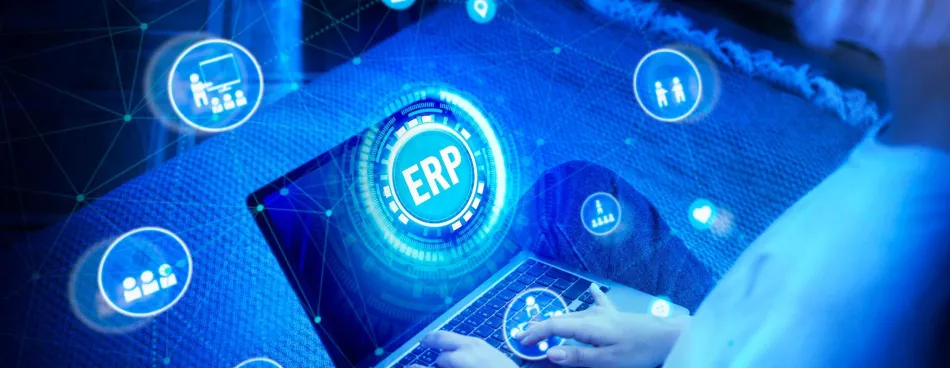
Integrating artificial intelligence (AI) and machine learning (ML) in product design revolutionizes how products are conceived, developed, and brought to market. These technologies enhance design processes’ efficiency, creativity, and precision, enabling designers to create innovative products that meet consumers’ evolving needs. This section explores how AI influences product design, provides examples of AI-driven design tools and processes, and discusses the benefits of AI in enhancing creativity and efficiency.
Artificial intelligence transforms product design by automating repetitive tasks, optimizing design processes, and providing data-driven insights. AI systems can analyze vast amounts of data to identify patterns and trends, which helps designers make informed decisions. Here are some key ways AI is influencing product design:
Several AI-driven design tools and processes are transforming the product design landscape. These tools leverage the power of AI and machine learning to enhance the efficiency and effectiveness of design processes. Here are some notable examples:
Integrating AI in product design offers numerous benefits, enhancing creativity and efficiency. Here are some key advantages:
Integrating AI and machine learning in product design transforms how products are created, offering numerous benefits that enhance creativity and efficiency. AI-driven tools and processes are automating repetitive tasks, providing data-driven insights, and generating innovative design alternatives that push the boundaries of traditional design methods. Companies embracing AI in their design processes can expect improved performance, reduced costs, and a competitive edge in the market. As AI technology evolves, its impact on product design will only grow, making it an essential tool for designers and companies looking to innovate and stay ahead in a rapidly changing landscape.

Designing products that cater to diverse user needs is not just a trend but a necessity in today’s market. As the world becomes more interconnected, the importance of inclusivity and accessibility in design grows. This section delves into the importance of designing for diverse user needs, explores trends in accessibility and inclusive design, and highlights case studies showcasing user-centric products.
Designing for diverse user needs ensures that products are usable and enjoyable for a broader audience. When designers consider users’ varying abilities, backgrounds, and preferences, they create products that are more intuitive and accessible, leading to a better overall user experience.
Inclusive design opens up new market opportunities by catering to underrepresented and underserved groups. By considering the needs of all potential users, companies can tap into larger customer bases and increase their market share. For example, products designed for people with disabilities can also appeal to older adults who may have similar accessibility needs.
Inclusive design promotes social equity by ensuring everyone can access products and services regardless of their abilities or backgrounds. This approach helps bridge the gap between user groups and fosters a more inclusive society.
In many regions, laws and regulations mandate accessibility in product design. For instance, the Americans with Disabilities Act (ADA) in the United States requires that public spaces and products be accessible to people with disabilities. By adhering to these regulations, companies can avoid legal issues and build a reputation for social responsibility.
Brands that prioritize inclusive and user-centric design are often viewed more favorably by consumers. This positive perception can lead to increased brand loyalty and customer satisfaction. Companies that commit to inclusivity are seen as socially responsible and forward-thinking.
Universal design refers to creating products and environments that are accessible to all people, regardless of age, disability, or other factors. This approach emphasizes simplicity and functionality, ensuring that the broadest range of people can use products.
Advancements in assistive technologies are transforming accessibility. Innovations such as screen readers, voice recognition software, and adaptive input devices enable people with disabilities to interact more effectively with products and digital interfaces. Companies are increasingly incorporating these technologies into their products to enhance accessibility.
Inclusive user research involves engaging with diverse users throughout the design process. This approach ensures that the perspectives and needs of all users are considered. Methods such as co-design workshops, usability testing with people with disabilities, and ethnographic studies help gather valuable insights that inform inclusive design decisions.
Customization options allow users to adjust products and interfaces to suit their needs. For example, adjustable font sizes, color contrast settings, and personalized layouts can make digital interfaces more accessible to users with visual impairments or other disabilities.
AI technologies are being leveraged to create more inclusive products. For instance, AI-powered tools can provide real-time captioning for videos, translate text into multiple languages, or offer personalized recommendations based on user preferences. These capabilities enhance accessibility and inclusivity in various contexts.
Sustainable design practices are increasingly intersecting with inclusive design. Eco-friendly materials and processes are being used to create accessible products, ensuring that inclusivity does not come at the expense of environmental responsibility. This holistic approach considers the long-term impact of design decisions on people and the planet.
Apple is renowned for its commitment to accessibility. The company integrates a wide range of accessibility features into its products, making them usable for people with various disabilities. For example, iOS includes VoiceOver, a screen reader for visually impaired users, and Switch Control, which allows users with limited mobility to control their devices using adaptive switches.
Microsoft’s Inclusive Design Toolkit is a comprehensive resource that provides guidelines and best practices for creating inclusive products. The toolkit emphasizes the importance of considering diverse users during the design process. Microsoft’s products, such as the Xbox Adaptive Controller, exemplify the company’s dedication to inclusive design. The controller is designed for gamers with limited mobility and can be customized with various assistive devices.
Procter & Gamble’s Herbal Essences brand has introduced accessible packaging for shampoo and conditioner products. The packaging features tactile markings that help visually impaired users distinguish between the shampoo and conditioner bottles. This simple yet effective design solution demonstrates the importance of considering all users in product design.
Google’s commitment to accessibility is evident in its development of tools like Live Transcribe and Sound Amplifier. Live Transcribe provides real-time transcription of spoken words, aiding users who are deaf or hard of hearing. Sound Amplifier enhances audio for users with hearing impairments, making it easier to hear conversations and media content. These tools showcase Google’s focus on creating inclusive and user-centric products.
IKEA’s ThisAbles project collaborates with non-profit organizations to create accessible add-ons for its furniture. These add-ons, such as easy-grip handles and couch lifts, are designed to make IKEA’s products more accessible to people with disabilities. The project reflects IKEA’s commitment to inclusive design and its efforts to ensure that its products are usable by everyone.

Minimalism has emerged as a significant trend in product design, emphasizing simplicity and functionality. This design philosophy prioritizes essential elements, eliminating unnecessary components to create clean, efficient, and aesthetically pleasing products. This section will explore the shift towards minimalist design, how to balance aesthetics with functionality, and examples of successful minimalist products.
A focus on simplicity, clarity, and eliminating redundant elements characterizes minimalism in product design. This design approach has gained popularity due to its ability to create products that are not only visually appealing but also highly functional and user-friendly. The shift towards minimalist design can be attributed to several factors:
Achieving a balance between aesthetics and functionality is a critical challenge in minimalist design. While the visual appeal of a product is essential, it should not compromise its usability or performance. Here are some strategies for balancing aesthetics with functionality in minimalist design:
Numerous products exemplify minimalist design principles, perfectly balancing aesthetics and functionality. Here are some notable examples:
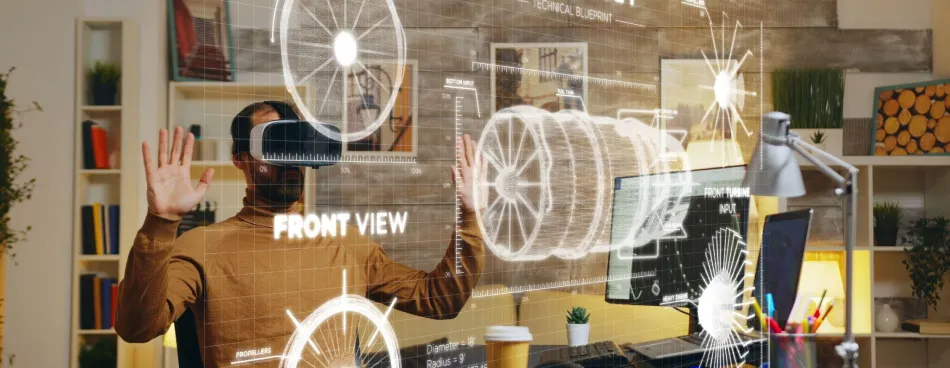
Augmented reality (AR) and virtual reality (VR) technologies are revolutionizing product design by offering immersive experiences that enhance visualization, user interaction, and overall design efficiency. This section explores how AR and VR are used in product design, their impact on user experience, and the prospects of these immersive technologies.
AR and VR technologies provide designers powerful tools to visualize and interact with their creations in previously impossible ways. These technologies enable the creation of highly detailed and realistic simulations, which can be used for various aspects of the design process, from conceptualization to final testing.
AR in Design: Augmented reality allows designers to overlay digital models onto the physical environment. This capability helps designers visualize how a product looks and functions in the real world, facilitating better decision-making during the early design stages. For example, AR can be used to project a 3D model of a piece of furniture into a room, allowing designers to assess its size, style, and fit within the existing decor.
VR in Product Development: Virtual reality offers a fully immersive environment where designers can explore their products in a simulated setting. This immersive experience enables designers to walk around and interact with their creations, providing a deeper understanding of spatial relationships, ergonomics, and aesthetics. VR benefits complex products like automobiles or architectural structures, where detailed visualization is crucial.
AR for Interactive Prototyping: AR can enhance physical prototypes by adding digital layers that simulate different functionalities and features. This interactive prototyping approach allows designers to test various aspects of their products without the need for multiple physical prototypes, saving time and resources.
VR for Virtual Prototyping: VR enables designers to create and test virtual prototypes in a controlled environment. This method allows for comprehensive testing of a product’s functionality, usability, and performance before committing to physical production. VR simulations can replicate real-world conditions, providing valuable insights into a product’s performance under different scenarios.
AR in Collaborative Design: Augmented reality facilitates real-time collaboration among team members, regardless of physical location. Designers can share AR models with colleagues and clients, allowing interactive feedback and discussion. This collaborative approach enhances communication and ensures all stakeholders align with the project’s goals and vision.
VR for Remote Collaboration: Virtual reality supports remote collaboration by creating a shared virtual space where team members can work together. This capability is particularly beneficial for global teams, enabling them to collaborate as if they were in the same room. VR meetings can include detailed walkthroughs of design concepts, fostering better understanding and decision-making.
AR and VR technologies significantly enhance the user experience by providing more engaging and interactive ways to interact with products. These technologies offer new opportunities for personalization, accessibility, and user satisfaction.
Customized Interactions with AR: Augmented reality allows users to customize their product interactions. For example, AR applications can enable users to visualize different configurations, colors, and product features before purchasing. This level of personalization enhances user satisfaction and helps build stronger connections between consumers and brands.
Immersive Shopping with VR: Virtual reality offers immersive shopping experiences where users can explore virtual stores and interact with products in a lifelike environment. This approach provides a more engaging and enjoyable shopping experience than traditional online shopping, potentially increasing conversion rates and customer loyalty.
AR for Interactive Training: Augmented reality can create interactive training programs that provide real-time guidance and feedback. For instance, AR can overlay instructions and diagrams onto physical equipment, helping users learn how to operate or assemble a product. This hands-on training approach improves retention and reduces the learning curve.
VR for Immersive Learning: Virtual reality offers fully immersive training environments where users can practice skills and procedures in a safe, controlled setting. VR training simulations are particularly valuable in healthcare, aviation, and manufacturing industries, where practical experience is crucial for proficiency and safety.
AR for Accessibility Features: Augmented reality can enhance accessibility by providing assistive features for users with disabilities. For example, AR applications can offer visual and auditory cues to help users navigate and interact with products. This inclusive design approach ensures that products are usable by a broader range of people, enhancing overall user experience.
VR for Inclusive Design: Virtual reality can simulate various physical and sensory conditions, helping designers create more inclusive products. By experiencing their designs from the perspective of users with different abilities, designers can identify potential barriers and make necessary adjustments to improve accessibility.
The future of AR and VR in product design looks promising, with continuous technological advancements and expanding applications across industries. Here are some key trends and prospects for the future:
Integrating AR and VR in product design revolutionizes how products are conceived, developed, and marketed. These immersive technologies give designers powerful tools to visualize, test, and refine their creations, enhancing creativity and efficiency. By leveraging AR and VR, designers can create more engaging and personalized user experiences, improve accessibility, and streamline collaboration and communication. The prospects of AR and VR in design are bright, with advancements in AI, increased realism, and greater accessibility driving further innovation. As these technologies continue to evolve, they will play an increasingly important role in shaping the future of product design, offering new possibilities for creativity, efficiency, and user satisfaction.
Section 6: Personalized and Customizable Products
Personalization and customization have become vital trends driving product development in today’s competitive market. Consumers increasingly seek products tailored to their preferences, needs, and lifestyles. This demand for personalized products has prompted companies to leverage advanced technologies to offer unique and customizable options. This section will explore product personalization and customization trends, the technologies enabling these trends, and case studies of brands successfully offering personalized products.
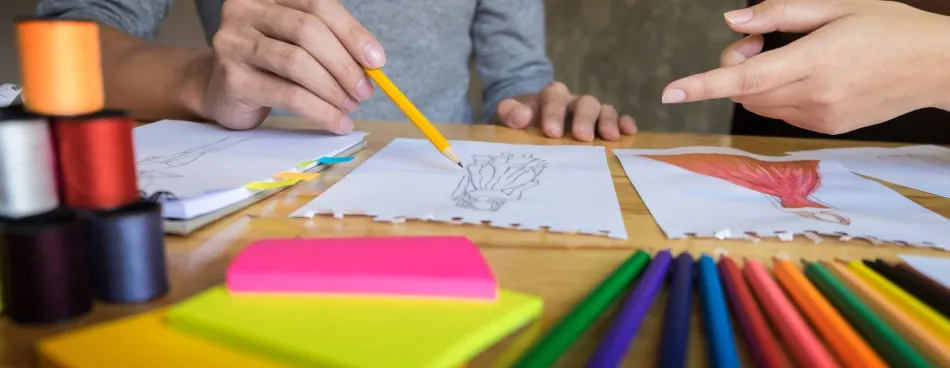
Overview: 3D printing, or additive manufacturing, is a crucial technology enabling customization. It allows for the creating of complex and unique designs that would be difficult or impossible to achieve with traditional manufacturing methods.
Applications: 3D printing is used in various industries, from fashion and healthcare to automotive and consumer electronics. For example, companies like Adidas use 3D printing to create customized shoe soles tailored to each customer’s unique foot shape and gait.
Benefits: 3D printing offers numerous benefits, including reduced lead times, lower production costs for small batches, and the ability to produce intricate and highly personalized designs.
Overview: AI and machine learning algorithms analyze vast consumer data to identify patterns and preferences. These insights are used to create personalized product recommendations and experiences.
Applications: AI is widely used in e-commerce platforms to provide personalized shopping experiences. For example, Amazon’s recommendation engine suggests products based on a user’s browsing and purchase history.
Benefits: AI-driven personalization enhances customer satisfaction by providing relevant and tailored product suggestions. It also helps companies understand consumer behavior and preferences more accurately.
Overview: AR and VR technologies offer immersive experiences that allow customers to visualize and customize products before purchasing.
Applications: Retailers use AR to enable customers to see how products will look in their homes or on their bodies. For example, furniture companies like IKEA use AR apps to let customers visualize how furniture will fit in their spaces.
Benefits: AR and VR enhance the shopping experience by providing a realistic preview of customized products. This reduces the uncertainty associated with online shopping and increases customer confidence.
Overview: Digital fabrication techniques, such as computer numerical control (CNC) machining, enable precise and customizable manufacturing processes.
Applications: CNC machining is used in industries such as aerospace, automotive, and medical devices to create exact, customized components and products.
Benefits: Digital fabrication ensures high-quality and consistent production of customized parts, reducing the need for manual intervention and increasing efficiency.
Overview: Nike’s “Nike By You” program allows customers to design their sneakers. Customers can choose from various colors, materials, and styles to create unique shoes.
Impact: This program has successfully engaged customers and increased brand loyalty. It allows Nike to offer a personalized experience while leveraging its existing manufacturing infrastructure.
Benefits: Nike By You enables customers to express their individuality through customized products. The program also helps Nike gather valuable data on consumer preferences and trends.
Overview: Coca-Cola’s “Share a Coke” campaign replaced its iconic logo with popular names on its bottles and cans. Customers could also personalize bottles with their names through the campaign’s website.
Impact: The campaign was highly successful, increasing sales and social media engagement. It created a personal connection between the brand and its customers.
Benefits: The “Share a Coke” campaign demonstrated the power of personalization in creating emotional connections with consumers. It also generated significant brand visibility and customer engagement.
Overview: BMW offers extensive customization options for its vehicles, allowing customers to choose from various colors, materials, trims, and features. Customers can configure their cars online or at dealerships to create a personalized vehicle.
Impact: BMW’s customization options enhance the customer experience and allow the brand to cater to individual preferences. This approach helps BMW differentiate itself from competitors and adds value to its premium offerings.
Benefits: Customizable vehicles give customers a sense of ownership and pride in their purchase. It also allows BMW to capture a broader range of customer preferences and increase customer satisfaction.
Overview: Stitch Fix is an online personal styling service that uses data analytics and human stylists to curate personalized clothing selections for customers. Customers complete a style profile, and Stitch Fix delivers customized clothing items based on their preferences.
Impact: Stitch Fix has gained popularity by offering a convenient and personalized shopping experience. The company’s use of data analytics to understand customer preferences sets it apart from traditional retail models.
Benefits: Personalized styling services like Stitch Fix provide customers with tailored fashion recommendations, reducing the time and effort required for shopping. This approach also helps retailers build strong customer relationships and loyalty.
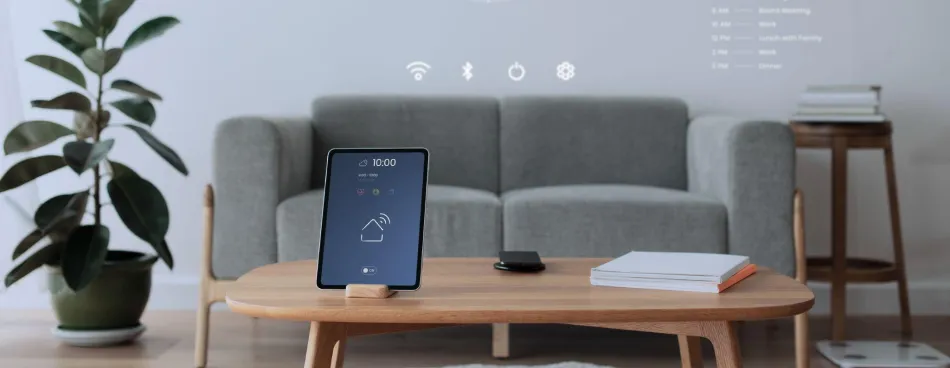
Integrating intelligent products and the Internet of Things (IoT) revolutionizes how products are designed, used, and managed. This technological advancement drives innovation across various industries, enabling the creation of connected devices that offer enhanced functionality, convenience, and user experiences. In this section, we will explore the rise of innovative products and IoT integration, the principles of designing for connectivity and smart features, and provide examples of innovative smart products.
Intelligent products and IoT integration represent a significant shift in the design and functionality of modern devices. These products leverage advanced sensors, wireless communication, and data analytics to provide intelligent, connected solutions.
Designing innovative products with IoT integration requires a holistic approach that considers connectivity, user interface, security, and scalability. Here are some fundamental principles for developing connected and intelligent features:
Importance of Connectivity: Seamless connectivity is crucial for the functionality of intelligent products. Designers must ensure that devices can communicate reliably with each other and with central control systems. This involves selecting appropriate communication protocols (such as Wi-Fi, Bluetooth, Zigbee, or LoRa) and ensuring compatibility with existing network infrastructure.
Challenges: Connectivity challenges include signal interference, data transmission latency, and network congestion. Designers must address these challenges by optimizing device placement, using robust communication protocols, and implementing redundant communication paths.
Intuitive Design: Innovative products’ user interface (UI) should be intuitive and easy to use. This involves designing interfaces that are visually appealing, responsive, and accessible to users with varying levels of technical expertise.
Voice and Gesture Control: Incorporating voice and gesture control can enhance the user experience by providing hands-free and natural interaction methods. For example, smart speakers like Amazon Echo and Google Home use voice recognition technology to control various smart home devices.
Data Security: Ensuring the security of data transmitted and stored by smart devices is paramount. Designers must implement encryption, authentication, and access control measures to protect user data from unauthorized access and cyber threats.
Privacy Considerations: Privacy concerns are critical when designing IoT devices. Companies must be transparent about data collection practices and provide users with control over their data. Privacy-by-design principles can help build user trust and compliance with regulations such as GDPR.
Scalable Solutions: Smart product ecosystems should be designed for scalability, allowing new devices and features to be added without significant reconfiguration. This involves using modular architectures and open standards that facilitate easy integration and expansion.
Interoperability: Ensuring interoperability between devices and platforms is essential for creating cohesive, intelligent ecosystems. Designers should adhere to industry standards and collaborate with other manufacturers to ensure seamless integration and compatibility.
Numerous innovative products exemplify the successful integration of IoT, offering creative solutions that enhance everyday life. Here are some notable examples:
Overview: The Nest Learning Thermostat is a smart home device that learns users’ temperature preferences and automatically adjusts settings to optimize energy usage. It uses sensors and Wi-Fi connectivity to provide remote control and real-time data insights.
Features: The thermostat can be controlled via a smartphone app, integrates with other smart home devices, and provides energy usage reports to help users reduce their carbon footprint.
Impact: Nest has transformed how people manage their home heating and cooling systems, offering convenience, energy savings, and enhanced comfort.
Overview: Philips Hue is an intelligent lighting system that allows users to control and customize their home lighting through a mobile app or voice commands. The system includes a variety of bulbs, light strips, and fixtures that can change colors and brightness.
Features: Users can create lighting schedules, sync lights with music and movies, and control lights remotely. The system is compatible with voice assistants like Amazon Alexa, Google Assistant, and Apple HomeKit.
Impact: Philips Hue enhances home ambiance and convenience, providing users endless possibilities for creating personalized lighting experiences.
Overview: The Tesla Model S is an electric vehicle incorporating advanced IoT features for enhanced performance, safety, and user experience. The car includes over-the-air software updates, remote diagnostics, and an advanced driver-assistance system (ADAS).
Features: The Model S offers autopilot capabilities, real-time traffic updates, and remote control via the Tesla mobile app. The vehicle’s connectivity allows for continuous improvements and new features through software updates.
Impact: Tesla’s integration of IoT has set new standards for the automotive industry, offering a blend of sustainability, innovation, and cutting-edge technology.
Overview: Fitbit fitness trackers are wearable devices that monitor various health metrics, including steps taken, heart rate, sleep patterns, and activity levels. The devices sync with the Fitbit app to provide comprehensive health insights.
Features: Fitbit trackers offer real-time data tracking, personalized health recommendations, and integration with other health and fitness apps. Users can set goals, track progress, and participate in challenges with friends.
Impact: Fitbit has empowered millions of users to take control of their health and fitness, promoting healthier lifestyles through data-driven insights and personalized recommendations.
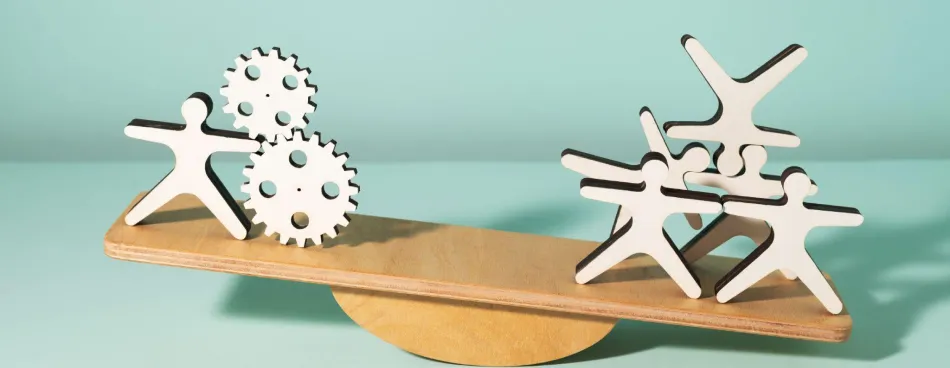
Ethical and transparent design practices have become paramount in an increasingly interconnected and conscientious world. Companies and designers recognize the importance of creating products that serve their intended purposes and adhere to ethical standards and transparent development processes. This section explores the growing emphasis on ethical design practices and the importance of transparency in product development and highlights brands leading in ethical design.
Ethical design involves creating products with consideration for moral principles and societal impact. It encompasses a range of practices, from ensuring fair labor conditions to minimizing environmental impact. The emphasis on ethical design practices has grown for several reasons:
Transparency in product development involves being open about the processes, materials, and practices used in creating a product. This transparency is crucial for several reasons:
Several brands are setting the standard for ethical and transparent design practices. These companies demonstrate a commitment to moral principles and serve as role models for others in the industry.

As we look ahead to 2024, the field of product design is poised for transformative changes driven by several key trends. These trends shape how products are designed and influence consumer behavior and market dynamics. Here is a recap of the top product design trends for 2024:
Adopting these trends is crucial for companies looking to future-proof their products and remain competitive in an ever-evolving market. Here’s why integrating these trends into product design is essential:
In the dynamic landscape of product design, staying ahead of the curve requires a commitment to continuous innovation and a willingness to embrace change. Here are some strategies for companies and designers to remain competitive and future-proof their products: